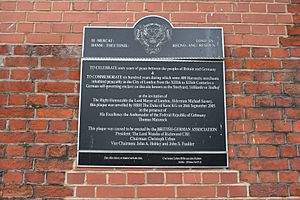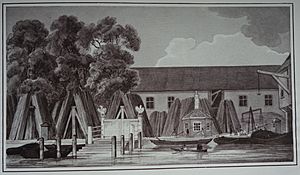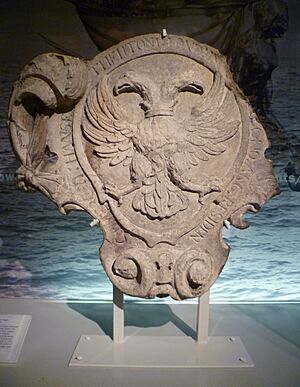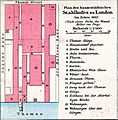Steelyard facts for kids
The Steelyard was a very important trading center in London a long time ago. It was the main base for a powerful group of merchants called the Hanseatic League. This group helped cities trade with each other across Europe. The Steelyard was active during the 1400s and 1500s. Its name comes from the Middle Low German word Stalhof.
Where Was the Steelyard Located?

The Steelyard was built on the north side of the River Thames in London. It was near where a small river, the Walbrook, flowed into the Thames. Today, this area is covered by Cannon Street station. You can still find a street nearby called Steelyard Passage, which reminds people of its history.
A City Within a City
The Steelyard was like a small, separate town. It had its own walls and everything the merchants needed to live and work. This included:
- Warehouses right by the river for storing goods.
- A special building to weigh goods accurately.
- A chapel for worship.
- Offices for managing money and deals.
- A large hall for meetings and events.
- Places to store cloth and wine.
- Kitchens and homes for the merchants.
The German merchants also used a nearby church called All-Hallows-the-Great. They had special permissions, like not having to pay some taxes. This meant the Steelyard was almost like its own country. It followed the rules of the Hanseatic League, not always the rules of London.
Discovering the Past
In 1988, archaeologists found parts of the old Steelyard. This happened while they were working on Cannon Street Station. It was once the biggest trading complex from the Middle Ages in Britain.
Images for kids















